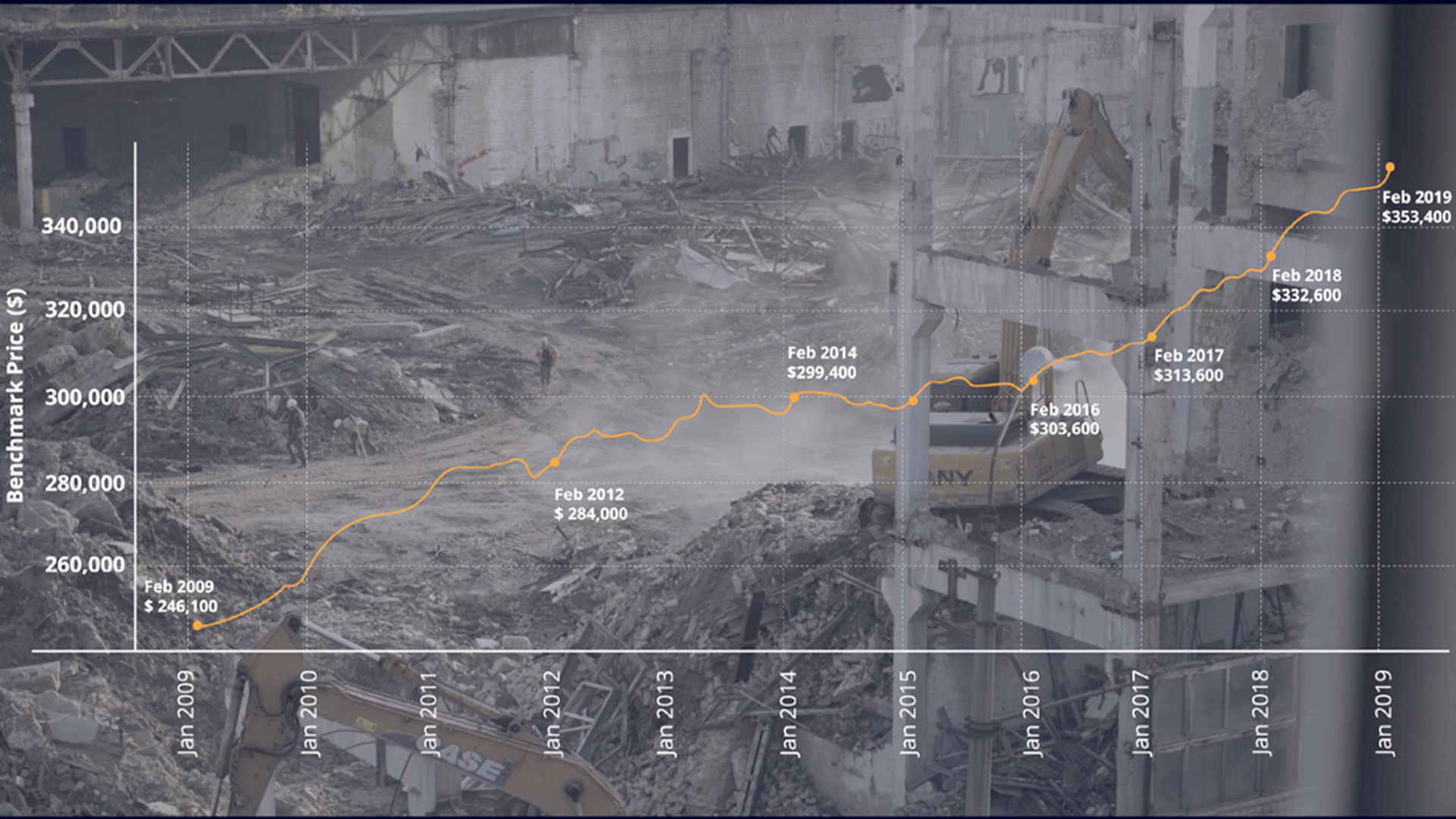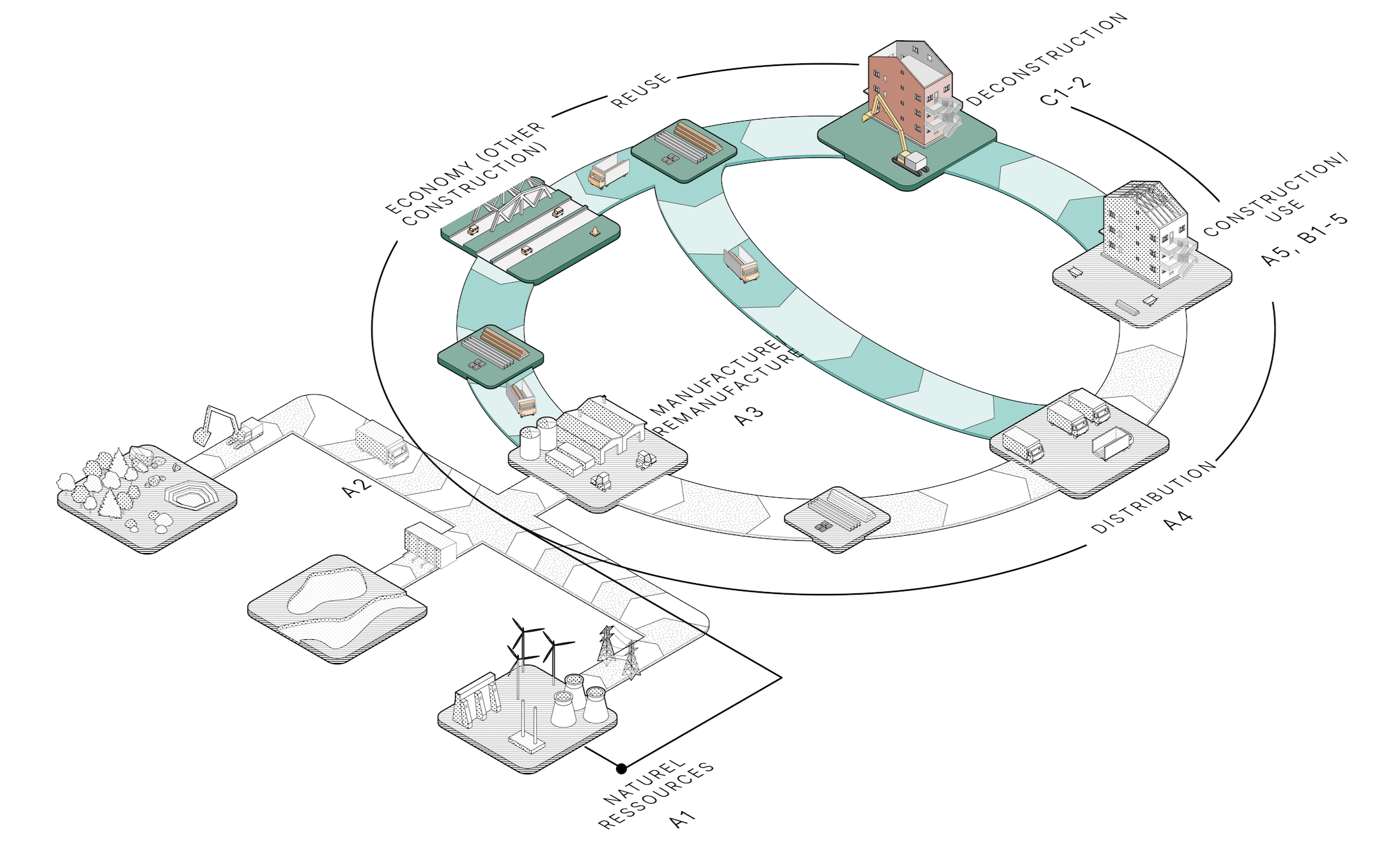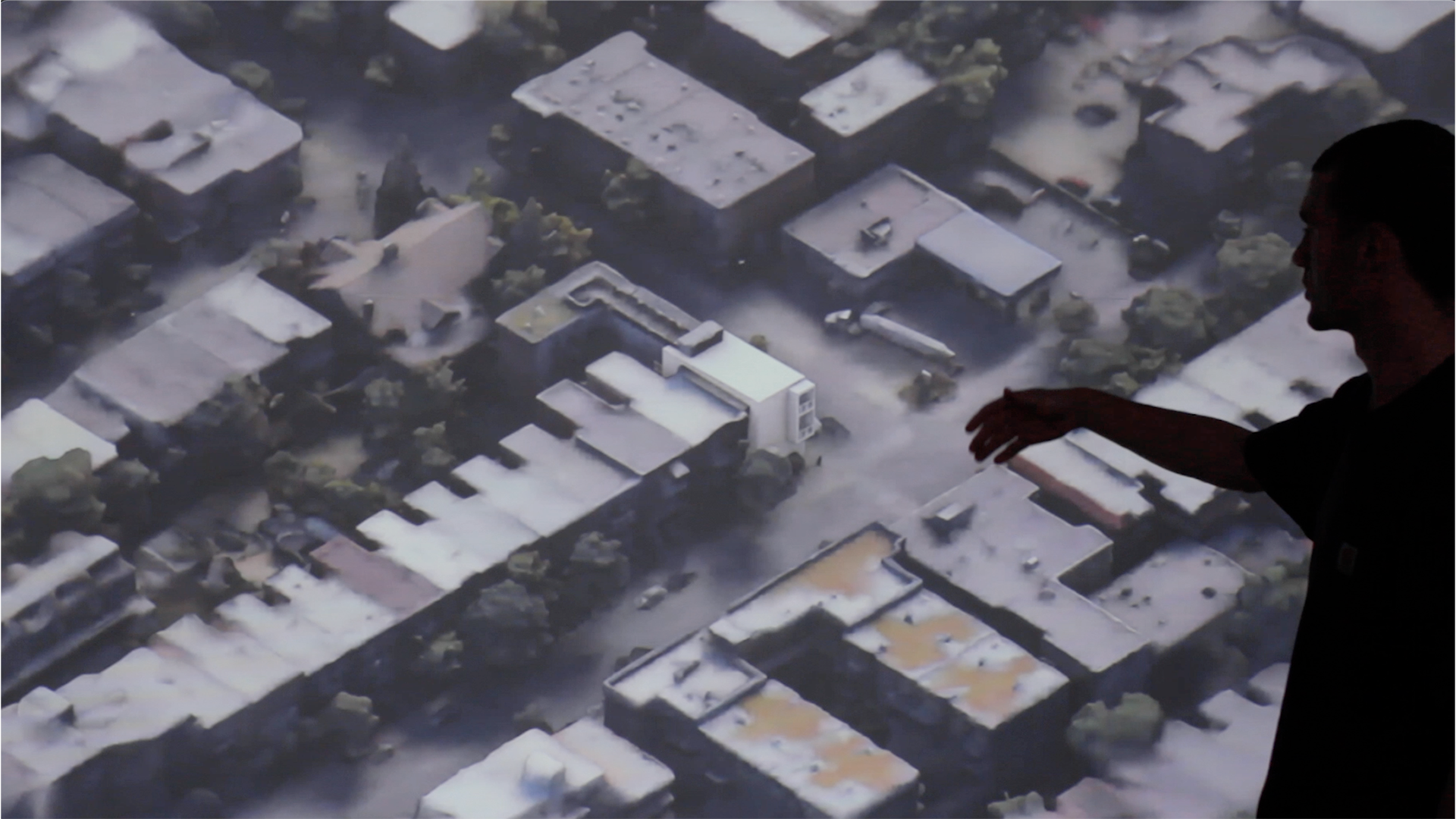SUSTAINABLE HOUSING
IN A CIRCULAR ECONOMY
Current modes of planning and construction, with their many far-reaching negative implications for society, economy, and the environment, necessitate a fundamental reconsideration of traditional building practices. A circular economy encourages a paradigm shift away from the current status-quo throughput economy that facilitates a culture of take-make-waste. This ongoing research investigates the use of circular economy principles in housing design and construction and highlights how those principles can result in both monetary savings, positive environmental impact, and socio-ecological change. It does this by focusing on three key circular economy principles and presents their applications in architectural construction and design, namely: 1) re-thinking of the end-of-use phase of a building and the potential of design-for-disassembly; 2) the role of digitization and data standardization in fostering evidence-based circular economy design decision-making; 3) presenting space as a resource to conserve, via exploration of the sharing economy and flexibility principles.




Team
Collaborators:
Avi Friedman (School of Architecture, McGill University)
Team Members :
Naomi Keena, Principal Investigator
Claire Troyer
Rachel O
Ava Klein
Ciara Wade
Publications
Keena, N.,
& Friedman, A. (2024). Sustainable Housing in a Circular Economy (1st ed.).
Routledge.
Keena, N.,
and Friedman, A (2022). Circular Economy in the Built Environment: Towards
Housing Affordability and Sustainability. In: Leal Filho, W., Azul, A.M., Doni,
F., Salvia, A.L. (eds) Handbook of Sustainability Science in the Future.
Springer, Cham.
Keena, N., Duwyn, J., & Dyson, A. (2022). Biomaterials to Support the Transition to a Circular Built Environment in the Global South. United Nations Environment Programme and Yale University.
Keena, N. and Friedman, A. (2021). Circular
Economy and the Housing Supply Challenge: Towards Affordability and
Sustainability. Monograph. McGill School of Architecture.
Dyson, A*; Keena, N*; Organschi, A; Gray, L; Novelli, N; Bradford, K; Aly-Etman, M; Gindlesparger,M; Wildman, H; Duwyn, J; Otto, M; Loran, S; Beltrandi, C; Radka, M; (2020). Built Environment Ecosystem Unit Framework towards Sustainable Urban Housing. IOP Conference Series: Earth and Environmental Science. *denotes co-first authorship
Keena, N., & Dyson, A. (2019). Canaries in the Coal Mine: Bio-Responders in the ER In Kate Altmann and Winston Yuen (Ed.), Just What the Doctor Ordered: Health and Architecture, 4-11, Paprika. Yale University
SUSTAINABLE HOUSING
IN A CIRCULAR ECONOMY
Current modes of planning and construction, with their many far-reaching negative implications for society, economy, and the environment, necessitate a fundamental reconsideration of traditional building practices. A circular economy encourages a paradigm shift away from the current status-quo throughput economy that facilitates a culture of take-make-waste. This ongoing research investigates the use of circular economy principles in housing design and construction and highlights how those principles can result in both monetary savings, positive environmental impact, and socio-ecological change. It does this by focusing on three key circular economy principles and presents their applications in architectural construction and design, namely: 1) re-thinking of the end-of-use phase of a building and the potential of design-for-disassembly; 2) the role of digitization and data standardization in fostering evidence-based circular economy design decision-making; 3) presenting space as a resource to conserve, via exploration of the sharing economy and flexibility principles.
Team
Collaborators:
Avi Friedman (School of Architecture, McGill Univeristy)
Team Members :
Naomi Keena, Principal Investigator
Claire Troyer
Rachel O
Ava Klein
Ciara Wade
Publications:
Keena, N., & Friedman, A. (2024). Sustainable Housing in a Circular Economy (1st ed.). Routledge.
Keena, N., and Friedman, A (2022). Circular Economy in the Built Environment: Towards Housing Affordability and Sustainability. In: Leal Filho, W., Azul, A.M., Doni, F., Salvia, A.L. (eds) Handbook of Sustainability Science in the Future. Springer, Cham.
Keena, N., Duwyn, J., & Dyson, A. (2022). Biomaterials to Support the Transition to a Circular Built Environment in the Global South. United Nations Environment Programme and Yale University.
Keena, N. and Friedman, A. (2021). Circular Economy and the Housing Supply Challenge: Towards Affordability and Sustainability. Monograph. McGill School of Architecture.
Dyson, A*; Keena, N*; Organschi, A; Gray, L; Novelli, N; Bradford, K; Aly-Etman, M; Gindlesparger,M; Wildman, H; Duwyn, J; Otto, M; Loran, S; Beltrandi, C; Radka, M; (2020). Built Environment Ecosystem Unit Framework towards Sustainable Urban Housing. IOP Conference Series: Earth and Environmental Science. *denotes co-first authorship
Keena, N., & Dyson, A. (2019). Canaries in the Coal Mine: Bio-Responders in the ER In Kate Altmann and Winston Yuen (Ed.), Just What the Doctor Ordered: Health and Architecture, 4-11, Paprika. Yale University

 DATA HOMEBASE
DATA HOMEBASE




